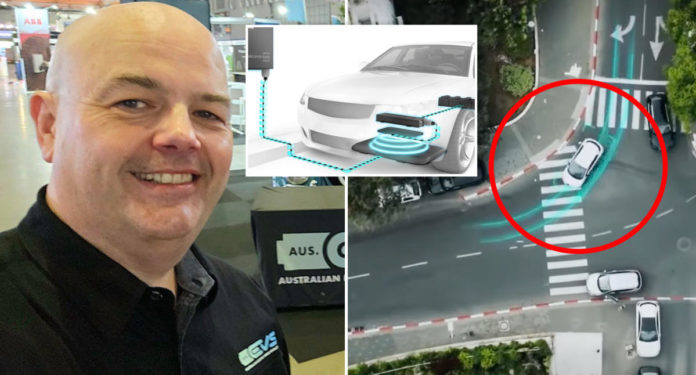Australia needs to step up its electric car game and be at the forefront of cutting-edge technology rather than trailing behind the pack, according to an expert, as Norway reveals its first wireless charging road. The futuristic road will allow EVs to charge while driving along it.
The 100-metre stretch of road in the city of Trondheim, will be tested with buses, and if successful it could revolutionise urban transport networks and potentially eliminate one of EV drivers’ biggest fears: range anxiety.
Edwin Higginson, director of Australian Electric Vehicle Specialists, told Yahoo News Australia he had seen wireless charging roads trialled in Sweden and said it was also “great to see Denmark pushing ahead with them too”.
Known as global leaders in sustainability, Sweden is currently building one of the world’s first permanent electric highways – expected to be completed in 2025, while Norway has also been trialling wireless charging at taxi ranks.
Higginson said wireless charging roads would “most definitely” work well in Australia but the federal government needed to collaborate with businesses for a trial to get off the ground.
“The discussion is having them on major roads where traffic is going slowly such as in capital cities, where I think it will work a lot better,” he told Yahoo News.
“The way New Zealand are trialling them is in car parks, as in actual standing points. It’s early days in terms of technology, where it will be in 10 years is unknown.”
How do wireless charging roads work?
Wireless charging roads work through “electromagnetic induction”, where an electric charge under the vehicle is sent through a thick wire coil used to generate a current in a nearby second coil. To use the technology, EVs must be adapted to be compatible.
Higginson said current trials in Norway installed charging points in a small stretch of road, meaning electric vehicles were able to power up while driving and didn’t need to plug into a charger.
“It’s important that Australia leads some of these trials rather than sitting on the sidelines,” Higginson said. “There are a lot of things we’re not doing that we should be doing.”
He said it was “very hard” for businesses to trial this technology without government funding and support, but if done correctly, wireless charging roads could one day be like mobile phone induction chargers which took several years to develop but are now a popular addition to homes and offices.
Not everyone agrees road charging would work
However, robotics engineer Ross De Rango, head of energy and infrastructure at the Electric Vehicle Council, said while electrifying a road was great for short, fixed routes with high transport requirements, he didn’t think it was practical for cars.
“Trams and trains work this way in metro settings all over the world – and they are awesome for reducing carbon emissions associated with transport,” he told Yahoo News.
“This said, it’s not likely to be as good a solution for cars, which go everywhere there are roads.
“To eliminate the need for energy storage in the cars, we’d need to invest in upgrading every section of road on which the cars being served might travel, which would not really be practical.”
Aussie government invests $3m in wireless charging trial
While one in 10 new vehicles sold in Australia were EVs, Higginson said he hoped the federal and state governments would broaden their focus to the “amazing EV technology” happening around the world.
While the technology is not yet commercially ready, wireless chargers would be useful for busy national highways, although funding the roadworks and grid integration required would be costly.
The Australian Government has invested $8.5 million into the nation’s EV sector with $3 million for a project led by Swinburne University to embed dynamic wireless charging technology into roads, aimed at eventually allowing electric heavy vehicles such as trucks and buses to charge while moving.
“Trials are important to get investment from someone to make it worthwhile,” Higginson said. “It could be three to four years before it could be commercialised. Ultimately, this will make it easier for everyone to own and operate an EV, but they could be commonplace in 10 years’ time.”
A Department of Climate Change, Energy, the Environment and Water spokesperson told Yahoo News the government had a $500 million program to create a network of EV charging infrastructure installed at 117 sites every 150km on major highways.
It is also developing strategies to increase decarbonisation for transport and related infrastructure and support national and international net zero emissions standards, they added.
Do you have a story tip? Email: [email protected].
You can also follow us on Facebook, Instagram, TikTok, Twitter and YouTube.

